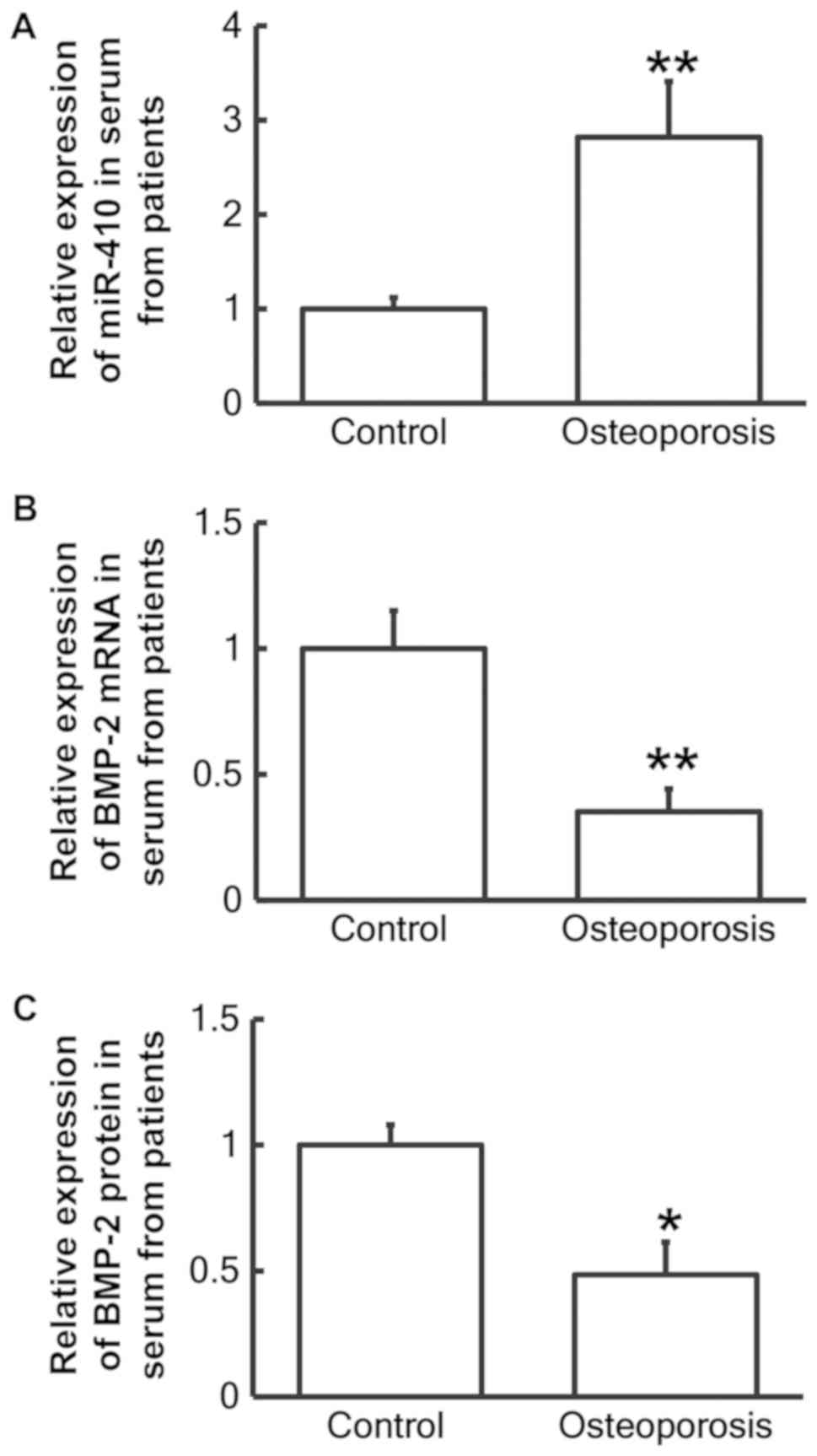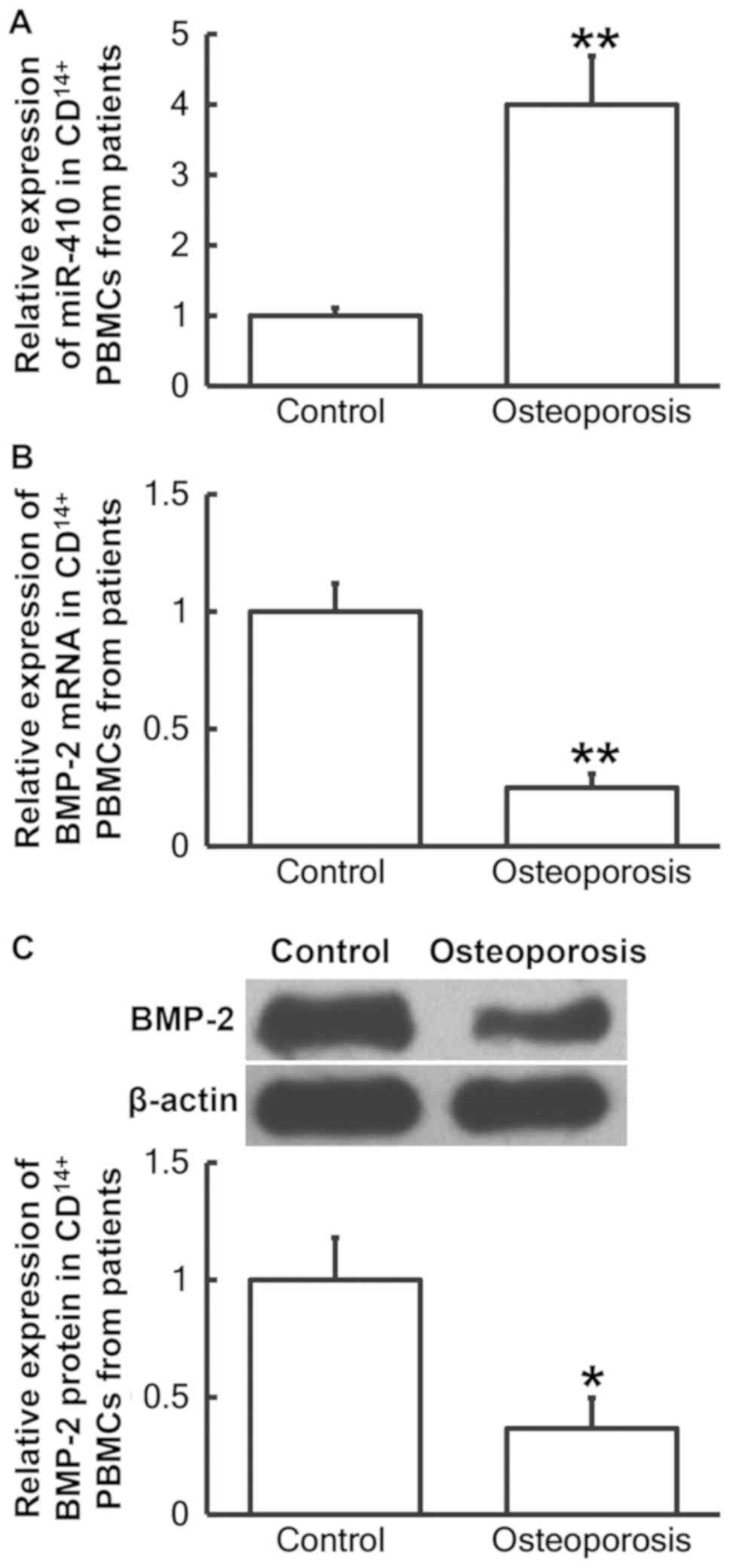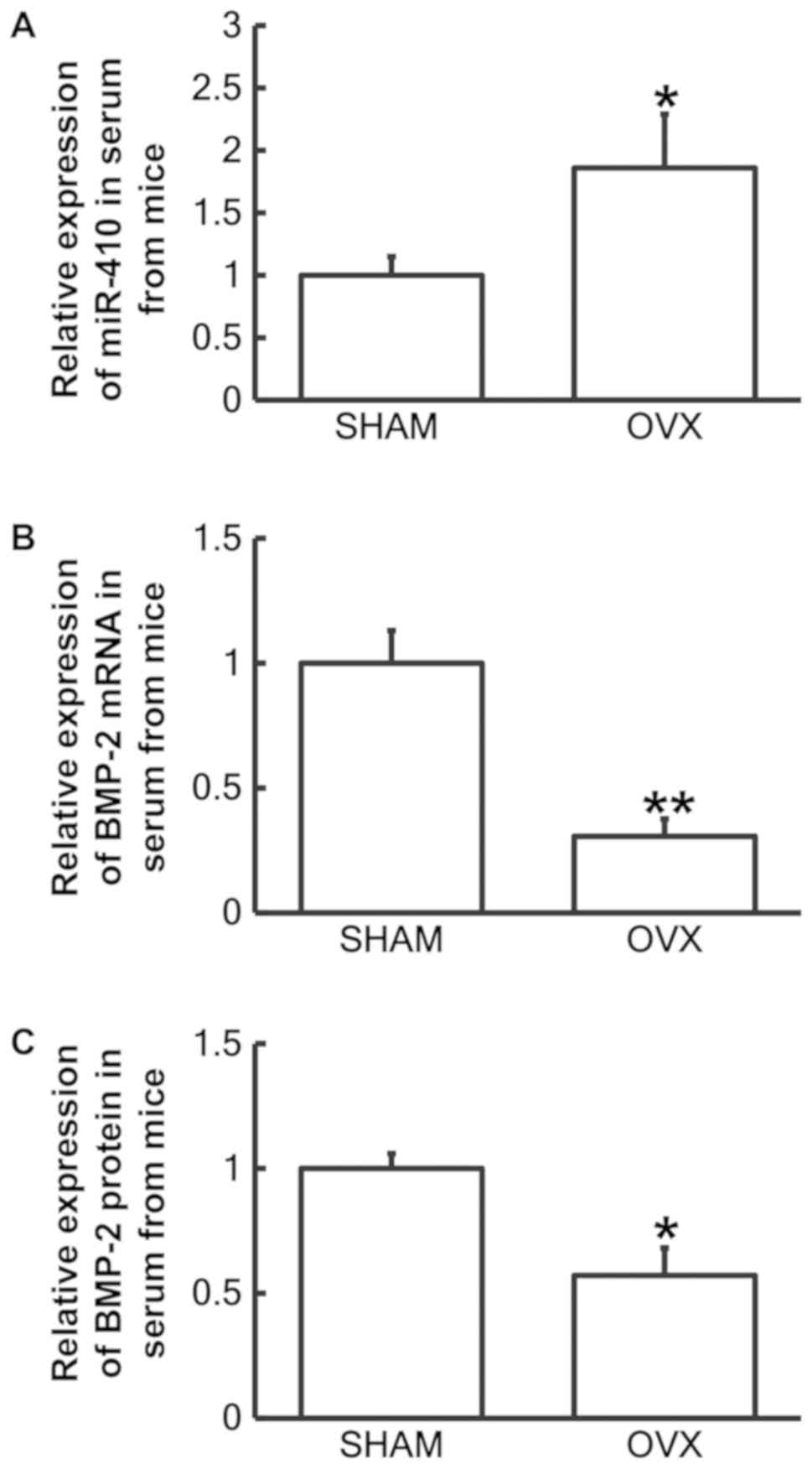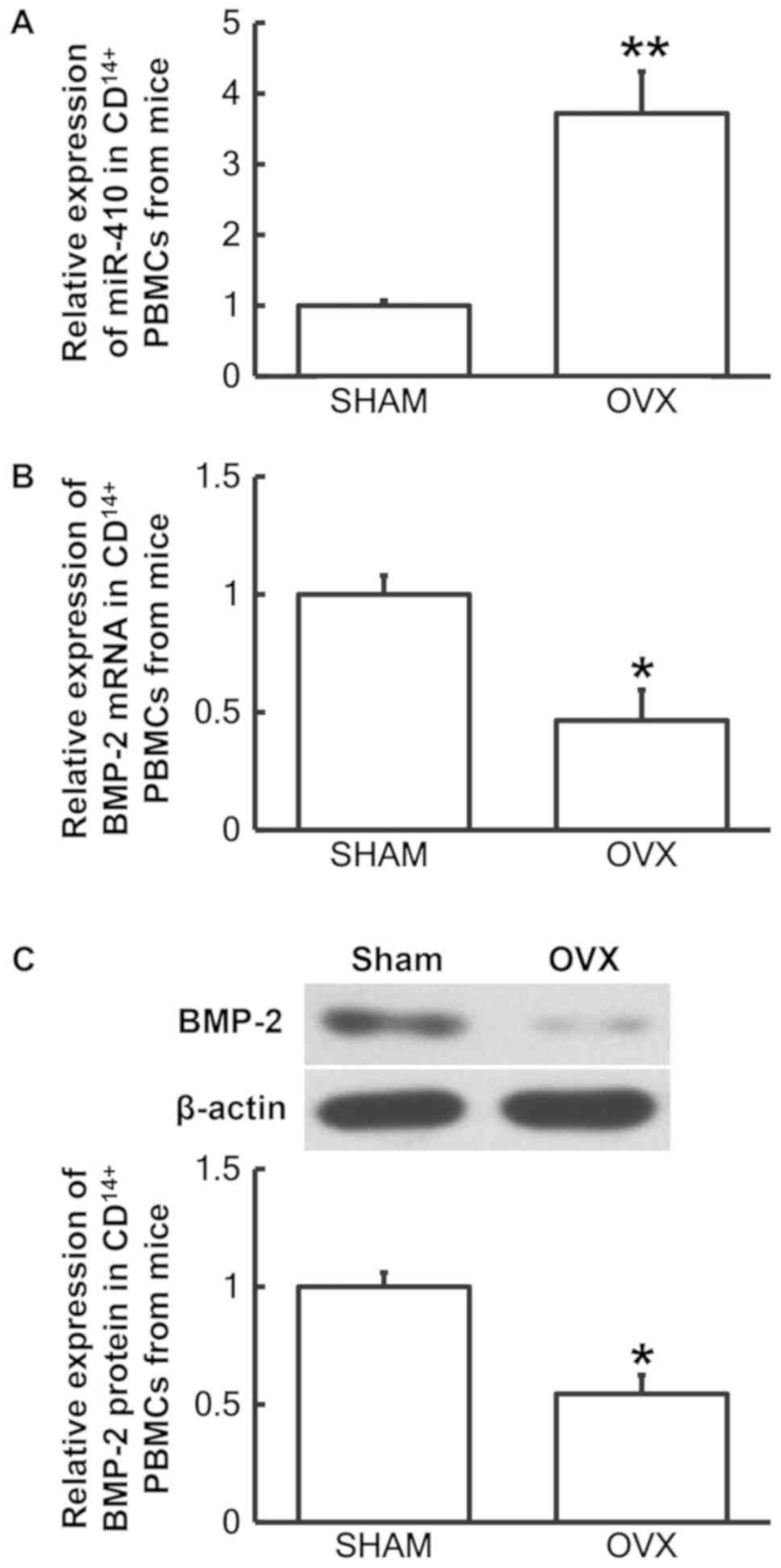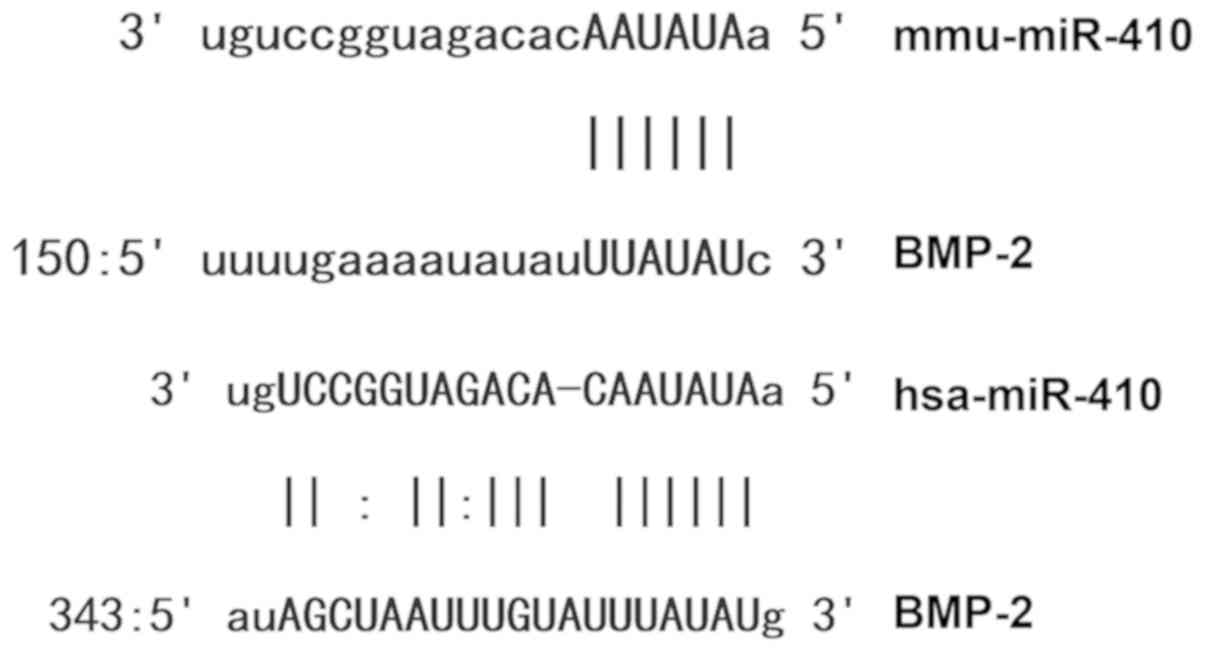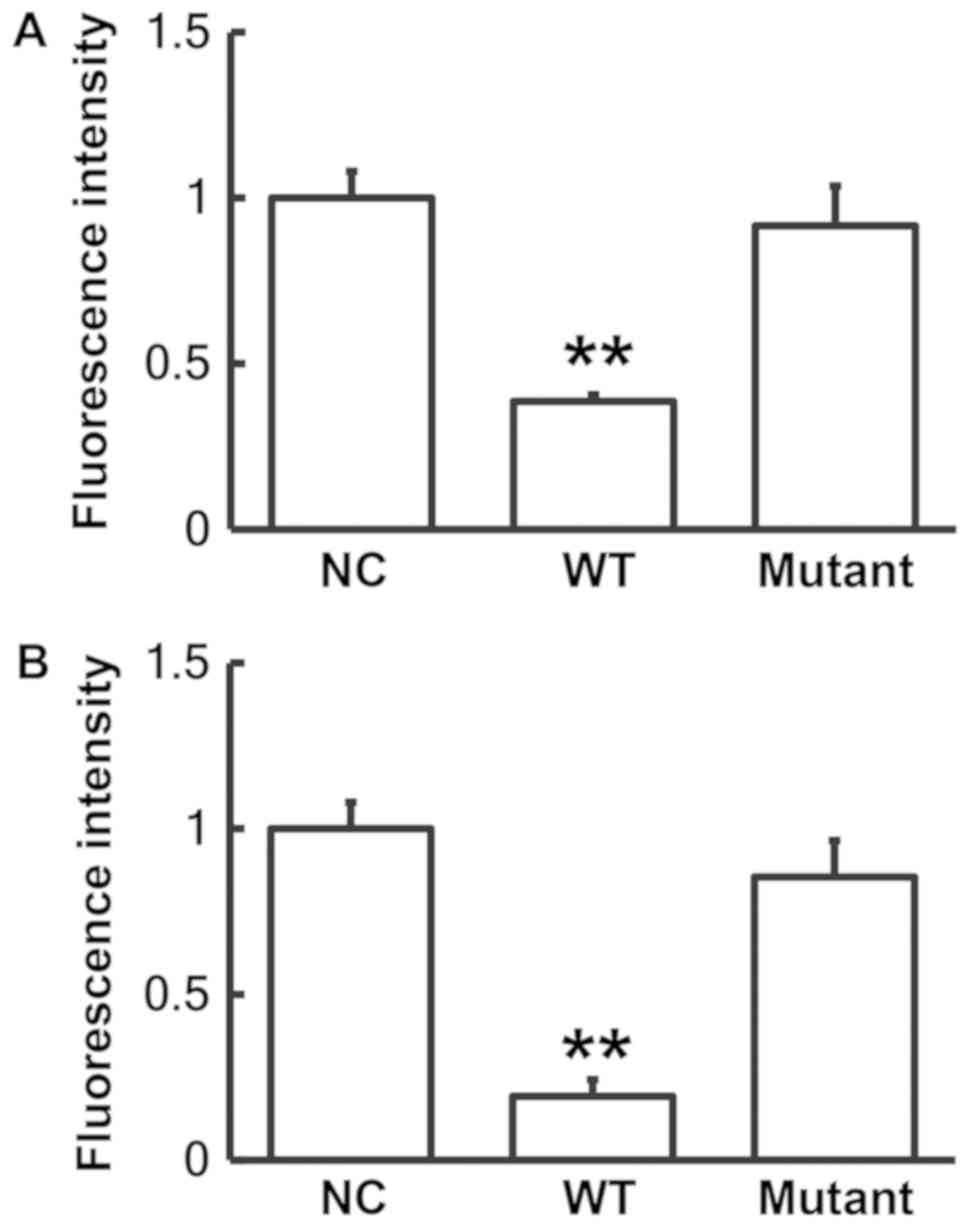|
1
|
Pietschmann P, Rauner M, Sipos W and
Kerschan-Schindl K: Osteoporosis: An age-related and
gender-specific disease-a mini-review. Gerontology. 55:3–12. 2009.
View Article : Google Scholar : PubMed/NCBI
|
|
2
|
Rachner TD, Khosla S and Hofbauer LC:
Osteoporosis: Now and the future. Lancet. 377:1276–1287. 2011.
View Article : Google Scholar : PubMed/NCBI
|
|
3
|
Committee for Chinese white paper on the
prevention and control of osteoporosis CHPF, . Chinese white paper
on osteoporosis. Chin J Health Manage. 3:148–154. 2009.(In
Chinese).
|
|
4
|
Zhang K, Li B, Chen Q, Zhang Z, Zhao X and
Hou H: Functional calcium binding peptides from pacific cod (Gadus
macrocephalus) bone: Calcium bioavailability enhancing activity and
anti-osteoporosis effects in the ovariectomy-induced osteoporosis
rat model. Nutrients. 10(pii): E13252018. View Article : Google Scholar : PubMed/NCBI
|
|
5
|
Kanis JA, McCloskey EV, Johansson H and
Oden A: Approaches to the targeting of treatment for osteoporosis.
Nat Rev Rheumatol. 5:425–431. 2009. View Article : Google Scholar : PubMed/NCBI
|
|
6
|
Hemingway F, Cheng X, Knowles HJ, Estrada
FM, Gordon S and Athanasou NA: In vitro generation of mature human
osteoclasts. Calcif Tissue Int. 89:389–395. 2011. View Article : Google Scholar : PubMed/NCBI
|
|
7
|
Sørensen MG, Henriksen K, Schaller S,
Henriksen DB, Nielsen FC, Dziegiel MH and Karsdal MA:
Characterization of osteoclasts derived from CD14+ monocytes
isolated from peripheral blood. J Bone Miner Metab. 25:36–45. 2007.
View Article : Google Scholar : PubMed/NCBI
|
|
8
|
Shalhoub V, Elliott G, Chiu L, Manoukian
R, Kelley M, Hawkins N, Davy E, Shimamoto G, Beck J, Kaufman SA, et
al: Characterization of osteoclast precursors in human blood. Br J
Haematol. 111:501–512. 2000. View Article : Google Scholar : PubMed/NCBI
|
|
9
|
Hsu H, Lacey DL, Dunstan CR, Solovyev I,
Colombero A, Timms E, Tan HL, Elliott G, Kelley MJ, Sarosi I, et
al: Tumor necrosis factor receptor family member RANK mediates
osteoclast differentiation and activation induced by
osteoprotegerin ligand. Proc Natl Acad Sci USA. 96:3540–3545. 1999.
View Article : Google Scholar : PubMed/NCBI
|
|
10
|
Sengle G, Ono RN, Lyons KM, Bächinger HP
and Sakai LY: A new model for growth factor activation: Type II
receptors compete with the prodomain for BMP-7. J Mol Biol.
381:1025–1039. 2008. View Article : Google Scholar : PubMed/NCBI
|
|
11
|
Chen D, Zhao M, Harris SE and Mi Z: Signal
transduction and biological functions of bone morphogenetic
proteins. Front Biosci. 9:349–358. 2004. View Article : Google Scholar : PubMed/NCBI
|
|
12
|
Dahlin C, Linde A, Gottlow J and Nyman S:
Healing of bone defects by guided tissue regeneration. Plast
Reconstr Surg. 81:672–676. 1988. View Article : Google Scholar : PubMed/NCBI
|
|
13
|
Yilgor P, Hasirci N and Hasirci V:
Sequential BMP-2/BMP-7 delivery from polyester nanocapsules. J
Biomed Mater Res A. 93:528–536. 2010.PubMed/NCBI
|
|
14
|
Murata M, Maki F, Sato D, Shibata T and
Arisue M: Bone augmentation by onlay implant using recombinant
human BMP-2 and collagen on adult rat skull without periosteum.
Clin Oral Implants Res. 11:289–295. 2000. View Article : Google Scholar : PubMed/NCBI
|
|
15
|
Ishibe T, Goto T, Kodama T, Miyazaki T,
Kobayashi S and Takahashi T: Bone formation on apatite-coated
titanium with incorporated BMP-2/heparin in vivo. Oral Surg Oral
Med Oral Pathol Oral Radiol Endod. 108:867–875. 2009. View Article : Google Scholar : PubMed/NCBI
|
|
16
|
Uchibe K, Son J, Larmour C, Pacifici M,
Enomoto-Iwamoto M and Iwamoto M: Genetic and pharmacological
inhibition of retinoic acid receptor γ function promotes
endochondral bone formation. J Orthop Res. 35:1096–1105. 2017.
View Article : Google Scholar : PubMed/NCBI
|
|
17
|
Cappato S, Tonachini L, Giacopelli F,
Tirone M, Galietta LJ, Sormani M, Giovenzana A, Spinelli AE,
Canciani B, Brunelli S, et al: High-throughput screening for
modulators of ACVR1 transcription: Discovery of potential
therapeutics for fibrodysplasia ossificans progressiva. Dis Model
Mech. 9:685–696. 2016. View Article : Google Scholar : PubMed/NCBI
|
|
18
|
Dong J, Cui X, Jiang Z and Sun J:
MicroRNA-23a modulates tumor necrosis factor-alpha-induced
osteoblasts apoptosis by directly targeting Fas. J Cell Biochem.
114:2738–2745. 2013. View Article : Google Scholar : PubMed/NCBI
|
|
19
|
Zhang GP, Zhang J, Zhu CH, Lin L, Wang J,
Zhang HJ, Li J, Yu XG, Zhao ZS, Dong W and Liu GB: MicroRNA-98
regulates osteogenic differentiation of human bone mesenchymal
stromal cells by targeting BMP2. J Cell Mol Med. 21:254–264. 2017.
View Article : Google Scholar : PubMed/NCBI
|
|
20
|
Laxman N, Mallmin H, Nilsson O and
Kindmark A: miR-203 and miR-320 regulate bone morphogenetic
protein-2-induced osteoblast differentiation by targeting
distal-less homeobox 5 (Dlx5). Genes (Basel). 8(pii): E42016.
View Article : Google Scholar : PubMed/NCBI
|
|
21
|
Ke X, Yuan Y, Guo C, Yang Y, Pu Q, Hu X,
Tang K, Luo X, Jiang Q, Su X, et al: MiR-410 induces stemness by
inhibiting Gsk3β but upregulating β-catenin in non-small cells lung
cancer. Oncotarget. 8:11356–11371. 2017. View Article : Google Scholar : PubMed/NCBI
|
|
22
|
Wu XP, Liao EY, Zhang H, Shan PF, Cao XZ
and Liu SP: Establishment of BMD reference plots and determination
of peak BMD at multiple skeletal regions in mainland Chinese women
and the diagnosis of osteoporosis. Osteoporos Int. 15:71–79. 2004.
View Article : Google Scholar : PubMed/NCBI
|
|
23
|
Liao EY, Wu XP, Luo XH, Zhang H, Dai RC,
Huang G and Wang WB: Establishment and evaluation of bone mineral
density reference databases appropriate for diagnosis and
evaluation of osteoporosis in Chinese women. J Bone Miner Metab.
21:184–192. 2003. View Article : Google Scholar : PubMed/NCBI
|
|
24
|
Kanis JA, Melton LJ III, Christiansen C,
Johnston CC and Khaltaev N: The diagnosis of osteoporosis. J Bone
Miner Res. 9:1137–1141. 1994. View Article : Google Scholar : PubMed/NCBI
|
|
25
|
Hovell R: Reduction, refinement and
replacement. Vet Rec. 172:6912013. View
Article : Google Scholar : PubMed/NCBI
|
|
26
|
Lee RC, Feinbaum RL and Ambros V: The C.
elegans heterochronic gene lin-4 encodes small RNAs with antisense
complementarity to lin-14. Cell. 75:843–854. 1993. View Article : Google Scholar : PubMed/NCBI
|
|
27
|
Bargalló ME, Guardo AC, Maleno MJ,
Miralles L, Egaña-Gorroño L, Escribà T, García F, Gatell JM, Arnedo
M and Plana M: Utility of systematic isolation of immune cell
subsets from HIV-infected individuals for miRNA profiling. J
Immunol Methods. 442:12–19. 2017. View Article : Google Scholar : PubMed/NCBI
|
|
28
|
Livak KJ and Schmittgen TD: Analysis of
relative gene expression data using real-time quantitative PCR and
the 2(-Delta Delta C(T)) method. Methods. 25:402–408. 2001.
View Article : Google Scholar : PubMed/NCBI
|
|
29
|
Bollen AM, Taguchi A, Hujoel PP and
Hollender LG: Case-control study on self-reported osteoporotic
fractures and mandibular cortical bone. Oral Surg Oral Med Oral
Pathol Oral Radiol Endod. 90:518–524. 2000. View Article : Google Scholar : PubMed/NCBI
|
|
30
|
Klein-Nulend J, van Oers RF, Bakker AD and
Bacabac RG: Bone cell mechanosensitivity, estrogen deficiency, and
osteoporosis. J Biomech. 48:855–865. 2015. View Article : Google Scholar : PubMed/NCBI
|
|
31
|
Kehler T: Epidemiology of osteoporosis and
osteoporotic fractures. Reumatizam. 61:60–64. 2014.(In Croatian).
PubMed/NCBI
|
|
32
|
Sykaras N and Opperman LA: Bone
morphogenetic proteins (BMPs): How do they function and what can
they offer the clinician? J Oral Sci. 45:57–73. 2003. View Article : Google Scholar : PubMed/NCBI
|
|
33
|
Gutierrez J, Osses N and Brandan E:
Changes in secreted and cell associated proteoglycan synthesis
during conversion of myoblasts to osteoblasts in response to bone
morphogenetic protein-2: Role of decorin in cell response to BMP-2.
J Cell Physiol. 206:58–67. 2006. View Article : Google Scholar : PubMed/NCBI
|
|
34
|
Mundy G, Garrett R, Harris S, Chan J, Chen
D, Rossini G, Boyce B, Zhao M and Gutierrez G: Stimulation of bone
formation in vitro and in rodents by statins. Science.
286:1946–1949. 1999. View Article : Google Scholar : PubMed/NCBI
|
|
35
|
Su JL, Chiou J, Tang CH, Zhao M, Tsai CH,
Chen PS, Chang YW, Chien MH, Peng CY, Hsiao M, et al: CYR61
regulates BMP-2-dependent osteoblast differentiation through the
{alpha}v{beta}3 integrin/integrin-linked kinase/ERK pathway. J Biol
Chem. 285:31325–31336. 2010. View Article : Google Scholar : PubMed/NCBI
|
|
36
|
Chang JK, Hsu YL, Teng IC and Kuo PL:
Piceatannol stimulates osteoblast differentiation that may be
mediated by increased bone morphogenetic protein-2 production. Eur
J Pharmacol. 551:1–9. 2006. View Article : Google Scholar : PubMed/NCBI
|
|
37
|
Hao L, Fu J, Tian Y and Wu J: Systematic
analysis of lncRNAs, miRNAs and mRNAs for the identification of
biomarkers for osteoporosis in the mandible of ovariectomized mice.
Int J Mol Med. 40:689–702. 2017. View Article : Google Scholar : PubMed/NCBI
|
|
38
|
Yang Y and Fang S: Small non-coding
RNAs-based bone regulation and targeting therapeutic strategies.
Mol Cell Endocrinol. 456:16–35. 2017. View Article : Google Scholar : PubMed/NCBI
|
|
39
|
Choi JL, Kao PF, Itriago E, Zhan Y,
Kozubek JA, Hoss AG, Banigan MG, Vanderburg CR, Rezvani AH,
Latourelle JC, et al: miR-149 and miR-29c as candidates for bipolar
disorder biomarkers. Am J Med Genet B Neuropsychiatr Genet.
174:315–323. 2017. View Article : Google Scholar : PubMed/NCBI
|
|
40
|
Batistela MS, Josviak ND, Sulzbach CD and
de Souza RL: An overview of circulating cell-free microRNAs as
putative biomarkers in Alzheimer's and Parkinson's diseases. Int J
Neurosci. 127:547–558. 2017. View Article : Google Scholar : PubMed/NCBI
|
|
41
|
Wheeler G, Ntounia-Fousara S, Granda B,
Rathjen T and Dalmay T: Identification of new central nervous
system specific mouse microRNAs. FEBS Lett. 580:2195–2200. 2006.
View Article : Google Scholar : PubMed/NCBI
|
|
42
|
Goodarzi HR, Abbasi A, Saffari M, Tabei MB
and Noori Daloii MR: MicroRNAs take part in pathophysiology and
pathogenesis of male pattern baldness. Mol Biol Rep. 37:2959–2965.
2010. View Article : Google Scholar : PubMed/NCBI
|
|
43
|
Hennessy E, Clynes M, Jeppesen PB and
O'Driscoll L: Identification of microRNAs with a role in glucose
stimulated insulin secretion by expression profiling of MIN6 cells.
Biochem Biophys Res Commun. 396:457–462. 2010. View Article : Google Scholar : PubMed/NCBI
|
|
44
|
Pepini T, Gorbunova EE, Gavrilovskaya IN,
Mackow JE and Mackow ER: Andes virus regulation of cellular
microRNAs contributes to hantavirus-induced endothelial cell
permeability. J Virol. 84:11929–11936. 2010. View Article : Google Scholar : PubMed/NCBI
|
|
45
|
Zhang YF, Yu Y, Song WZ, Zhang RM, Jin S,
Bai JW, Kang HB, Wang X and Cao XC: miR-410-3p suppresses breast
cancer progression by targeting Snail. Oncol Rep. 36:480–486. 2016.
View Article : Google Scholar : PubMed/NCBI
|
|
46
|
Liu C, Zhang A, Cheng L and Gao Y: miR-410
regulates apoptosis by targeting Bak1 in human colorectal cancer
cells. Mol Med Rep. 14:467–473. 2016. View Article : Google Scholar : PubMed/NCBI
|
|
47
|
Wang J, Ye H, Zhang D, Hu Y, Yu X, Wang L,
Zuo C, Yu Y, Xu G and Liu S: MicroRNA-410-5p as a potential serum
biomarker for the diagnosis of prostate cancer. Cancer Cell Int.
16:122016. View Article : Google Scholar : PubMed/NCBI
|















